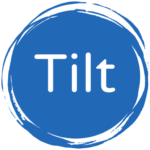How to become an agile organisation
In 2018 Prostate Cancer UK delivered their first ‘March the Month’ virtual fundraising product using agile ways of working. In year 1 they raised £22,000 from a £5,000 spend. In year 2 they raised £109k and by the time the pandemic hit in 2020 they were able to respond with an additional ‘Cycle the Month’ product which raised £242k with a return on investment of 16:1.
Their success enabled them to start an organisation-wide agile transformation (with some help from us). Read on for the full story plus the 3 key drivers of success that you can implement too. Or listen to the story here.
1. First, name the issues
There wasn’t consistency in how we ran projects, we weren’t collaborating as well as we could and we weren’t being truly user-led. It became clear that, to stop men dying from prostate cancer, agile was the way forward.





Chloe Butler
AGILE LEAD
2. Set clear aims for agile
3. Build the right team










Gareth Ellis-Thomas
DIRECTOR OF TRANSFORMATION AND TECHNOLOGY
Chloe Butler
AGILE LEAD
Eleanor Gibson
AGILE COACH
Julia Begley
AGILE COACH
What is making Prostate Cancer UK's agile transformation a success?
Being agile for the sake of it is no good to anyone
We coached Prostate Cancer UK to create clear outcomes for embedding agile ways of working from the very beginning by running a workshop with key change makers. During the workshop we supported them to explore:
- How will you know this agile transformation has been successful?
- Supposing all of this has happened…What difference will it make?
- Who will notice and what will they notice?
They then took those same questions to co-create objectives for agile with the wider organisation. Julia coached Chloe to use these to build a simple agile roadmap to guide them and monitor their progress. Importantly, they are updating their objectives and roadmap as they go.
There is growing agreement that top down and bottom up is the best way to achieve success
With our coaching, Chloe facilitates a 2-hour workshop every 5 weeks with the whole org-wide leadership team. They identify the key challenges that are getting in the way of them delivering their objectives, then apply agile principles to co-create solutions to try.
They combine this with coaching teams ‘on the ground’ to apply agile ways of working in specific projects. Chloe is carefully prioritising how she spends her time with each team in order to maximise her impact. Her aim is not to enforce one way of working, instead she is encouraging each team to think about what will work best for them.
“The leadership agile sessions are bringing the team together in a fresh way. It gives them the time to reflect, to break down problems and uncover solutions. By working together on each challenge, Leadership are seeing how agile working can enable them to use meeting time to collaborate openly and deliver together. We’re emotional about our cause so we want to do everything, all the time, to the best standard. These sessions are showing us the value in de-prioritising certain things to enable us to enable focus delivering the most valuable ones. It’s a work in progress but there’s definite progress!” Chloe Butler
3. Agile as a mindset not tools or processes
Focussing on mindset over methodology
Both Gareth and Chloe feel that approaching agile as a mindset rather than a rigid structure or set of tech tools has been key to enabling the whole organisation to apply agile ways of working.
an agile approach to agile transformation which is the only way we’ve known it to work. This approach is something we at Tilt brought to the table.
Gareth shares: “I didn’t expect that we would focus on mindset over methodology or set of rigid processes, but this approach is a big reason that teams right across the organisation are interested in agile – because they can use the principles to guide them rather than having a rigid process.”
They combine this with coaching teams ‘on the ground’ to apply agile ways of working in specific projects. Chloe is carefully prioritising how she spends her time with each team in order to maximise her impact. Her aim is not to enforce one way of working, instead she is encouraging each team to think about what will work best for them.
So far Prostate Cancer UK are finding that agile is having a remarkably positive impact
- They are delivering better products and services to achieve their mission. For example they built their award winning 30 second risk checker in an agile way. 67% of men asked said that the risk checker helped them to make an informed choice about what to do about their risk. The NHS noticed and invested in marketing it.
- The Leadership Team co-created created a strategy with 5 cross-organisational OKRs which required collaboration to deliver.
- An enthusiastic agile Community of Practice is now driving change across all directorates.
- Staff are reporting they are become more customer focused, able to respond to the market more quickly, more often and are using their time and energy more effectively and efficiently.
I’m really pleased that this is shaping up to be a truly organisational transformation, not just focusing on areas where agile is traditionally seen. There are needs all over the charity, it wouldn’t be right to box off agile just for products when it has potential to bring benefits everywhere else. For example:
- Our research team are improving how they gather information about the long term impact of our awards.
- Our influencing team are testing ways to coach clinicians better after the pandemic.
- Our communications team are using agile principles to guide how they work better together within a new structure.







Gareth Ellis-Thomas
DIRECTOR OF TRANSFORMATION AND TECHNOLOGY
What's next?
Prostate Cancer UK are using their agreed outcomes and measures of success in their roadmap to continue to work towards their vision of a truly agile organisation. They have new agile pilots, agile projects and a Community of Practice underway as well as continuing engagement and support from leadership to adapt the organisational environment and allow agile to thrive.
“We think roughly 15% of the organisation is involved in some sort of multidisciplinary agile work. Our aim for the year is for 30% to have had experience of working in this way.”
Gareth Ellis-Thomas



